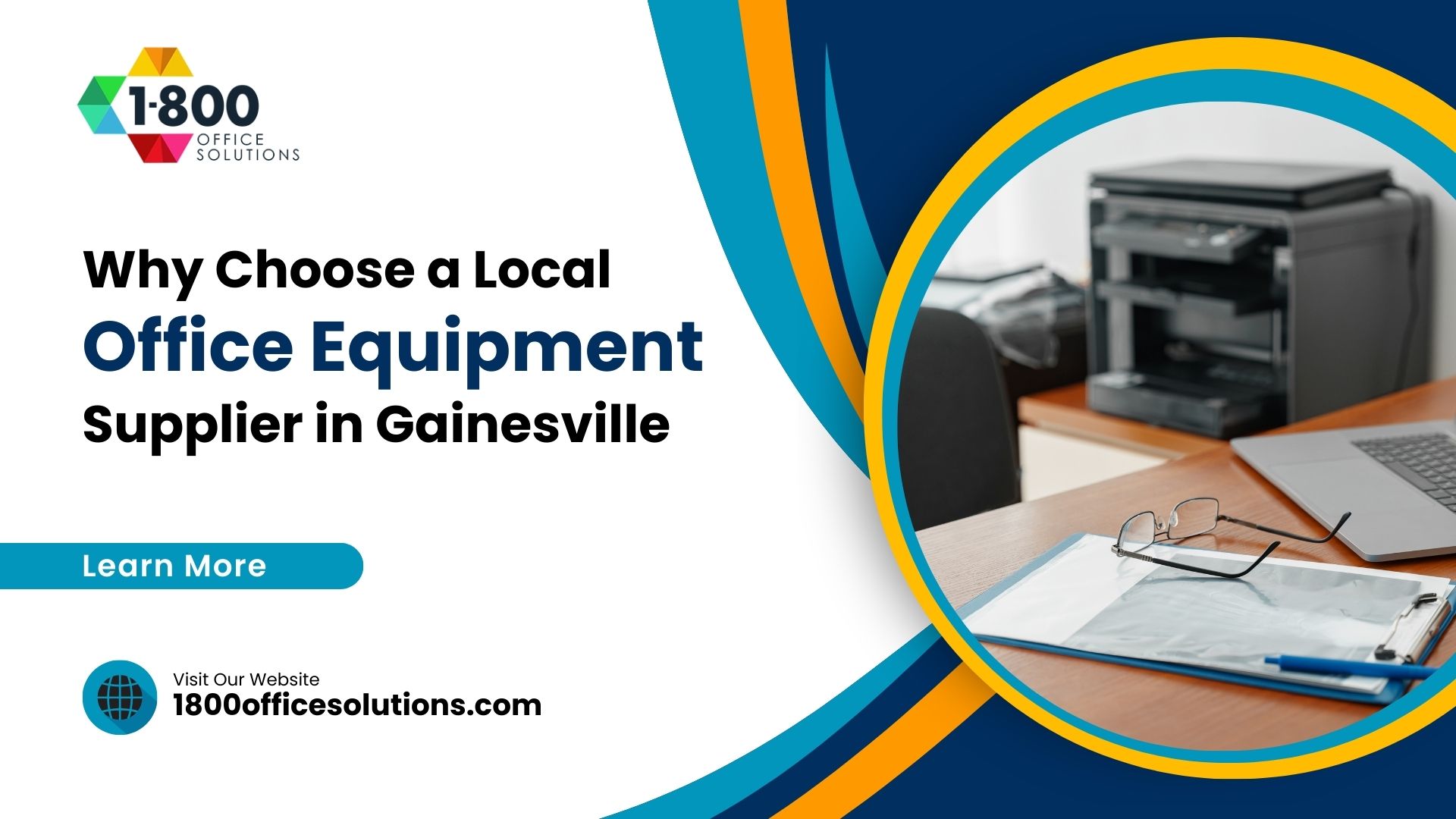Office Equipment Maintenance: The Tips Your Business Needs to Save Time and Money
Introduction
In today’s fast-paced business environment, office equipment maintenance is more than just a routine task; it’s a critical aspect that can significantly impact both time and money. The efficiency and functionality of office tools such as printers, copiers, and computers are vital for daily operations. A minor malfunction can lead to delays, affecting overall productivity.
Investing in regular maintenance can prevent unexpected breakdowns, extend the lifespan of the equipment, and save costs on replacement. According to Constellation’s Business Energy Savings Tips, energy-efficient practices in office equipment can substantially reduce electricity bills. Thus, understanding and implementing proper care and maintenance strategies is not just about keeping machines running; it’s about optimizing performance and contributing to the bottom line.
Understanding Office Equipment Maintenance
Definition and Importance Equipment Service
Equipment maintenance refers to the regular inspection, cleaning, and repair of office devices to ensure optimal performance. It includes tasks like removing small particles, lubricating moving parts, updating software, and addressing minor issues before they escalate. Proper maintenance is essential to prevent unexpected breakdowns, enhance efficiency, and prolong the equipment’s lifespan. It’s a proactive approach that saves time and money in the long run.
Types of Office Equipment
Office equipment can be broadly categorized into three types:
- Computing Devices: Includes computers, laptops, and servers. Regular updates and antivirus checks are essential.
- Printing and Copying Devices: Encompasses printers, copiers, scanners, and fax machines. These require frequent cleaning and toner replacement.
- Communication Devices: Phones, routers, and other networking equipment. Maintenance includes regular firmware updates and physical cleaning.
Understanding the specific needs of each type is crucial for effective maintenance, as highlighted by 1800 Office Solutions Energy Saving Advice for Your Business.
Common Problems and Solutions
Office equipment often faces common problems that can be addressed with regular maintenance:
- Dust Accumulation: Dust can clog vents and cause overheating. Regular cleaning with compressed air can prevent this issue.
- Paper Jams in Printers and Copiers: Often caused by misalignment or worn rollers. Regular inspection and alignment can prevent jams.
- Slow Computers: Caused by outdated software or malware. Regular updates and antivirus scans can enhance performance.
- Short Lifespan of Equipment: Lack of maintenance can lead to frequent replacement. Regular servicing extends the lifespan.
- Decreased Productivity: Malfunctioning equipment can slow down work processes. Scheduled maintenance ensures that all devices are in top working condition.
Office equipment maintenance is not just a routine task but a strategic approach that impacts the overall efficiency and profitability of a business. By understanding the types of equipment, common problems, and implementing regular maintenance practices, businesses can save significant time and money.
The integration of energy-efficient practices further adds to the cost-saving aspect, making equipment maintenance a vital part of modern business operations.
Tips and Strategies for Maintaining Office Equipment
Tips for Saving Time and Money
Office equipment maintenance is not just about fixing a piece of equipment when it breaks down. It’s about taking proactive measures to maintain your office equipment efficiently, ensuring they are always in working condition. Here’s how you can save both time and money:
Energy Efficiency Practices
Implementing energy efficiency practices is essential to maintain office tools effectively. It includes using energy-saving modes on devices, optimizing power settings, and monitoring energy consumption. These practices reduce energy bills and contribute to sustainability.
Purchasing Energy-Efficient Office Equipment
When buying new office supplies like printers, scanners, or projectors, look for energy-efficient models. They consume less power, reducing energy costs, and often come with better maintenance features. 1800 Office Solution’s Energy Saving Advice for Your Business provides insights into selecting energy-efficient equipment.
Reducing Peak Demand
Peak demand refers to the time when energy consumption is at its highest. By scheduling equipment to run during off-peak hours, you can save on energy costs. It also helps in reducing the strain on machinery, extending their longevity.
Programming Thermostats
Programmable thermostats allow you to set temperature preferences for different times of the day. By optimizing temperature settings, you can save energy without compromising comfort. It’s a simple yet effective way to maintain your office environment efficiently.
Using Energy-Efficient Light Bulbs
Replacing traditional bulbs with energy-efficient ones can significantly reduce energy consumption. They last longer, require less maintenance, and contribute to a greener environment.
Taking Advantage of Natural Sunlight
Utilizing natural sunlight reduces the need for artificial lighting. Designing the office space to allow more natural light not only saves energy but also creates a more pleasant working environment.
Powering Down Computers and Equipment
Encouraging employees to power down computers and other office equipment when not in use can save significant energy. It also helps in preventing potential overheating and prolongs the equipment’s lifespan.
Preventing Phantom Energy
Phantom energy refers to the power consumed by devices when they are turned off but still plugged in. Using power strips and unplugging devices when not in use can prevent this hidden energy consumption.
Heating and Cooling Cost Reduction
Heating and cooling systems are often the most energy-consuming in an office. Proper maintenance can lead to substantial savings:
Eliminating Heating/Cooling Loss
Inspecting and sealing any leaks in windows, doors, and ducts can prevent heating or cooling loss. It ensures that the HVAC system is running smoothly, reducing energy consumption.
Installing Programmable Thermostats
As mentioned earlier, programmable thermostats allow temperature control, leading to energy savings. They can be set to adjust the temperature automatically during non-working hours, reducing unnecessary energy usage.
Regular HVAC Maintenance
Regular inspection and maintenance of HVAC systems can prevent unexpected problems and breakdowns. Cleaning filters, checking for leaks, and timely repairs ensure optimal performance.
Replacing HVAC if Necessary
An old or inefficient HVAC system can be costly to maintain and consume more energy. Replacing it with a more efficient model can lead to long-term savings and better performance.
Changing Air Filters Regularly
Dirty air filters can obstruct airflow, causing the system to work harder. Regularly changing filters ensures that the system runs efficiently, reducing energy costs.
Sealing Heating and Cooling Ducts
Properly sealed ducts prevent air leakage, ensuring that the heating or cooling reaches all parts of the office. It’s an essential maintenance task that contributes to energy efficiency.
Employee Engagement and Incentives
Engaging Employees in Energy-Efficient Practices
Educating and engaging employees in energy-saving practices is vital. Encourage them to turn off lights, computers, and other office equipment when not in use. Regular reminders and training can foster a culture of energy conservation.
Financial Incentives and Rebates
Offering incentives or participating in rebate programs for energy-efficient practices can motivate employees. It not only promotes a sense of responsibility but also contributes to overall savings.
High-Efficiency Upgrades for Office Equipment
Investing in high-efficiency upgrades for office equipment and systems can lead to long-term benefits. These upgrades not only contribute to energy conservation but also translate into substantial financial savings. Here’s a detailed look at some of the key areas where businesses can make impactful changes:
1. LED Lighting
- What It Is: LED (Light Emitting Diode) lighting is a technology that uses semiconductor materials to produce light. It’s known for its energy efficiency and long lifespan.
- Benefits: Compared to traditional incandescent or fluorescent bulbs, LED lights consume up to 75% less energy and last 25 times longer.
- Case Study: A large corporate office switched to LED lighting and saved $20,000 annually on energy bills.
2. Energy-Efficient HVAC Systems
- What It Is: HVAC (Heating, Ventilation, and Air Conditioning) systems that are designed with energy efficiency in mind use advanced technology to minimize energy consumption.
- Benefits: Energy-efficient HVAC systems can reduce energy usage by 20-40%, leading to significant cost savings.
- Case Study: A manufacturing company upgraded its HVAC system and reduced its energy costs by 30%, translating to annual savings of $50,000.
3. Smart Thermostats
- What It Is: Smart thermostats allow for more precise control over heating and cooling, enabling users to set schedules and remotely control the temperature through smartphones or computers.
- Benefits: By optimizing temperature settings, businesses can save up to 15% on heating and cooling costs.
- Case Study: A hotel chain implemented smart thermostats across its properties, resulting in an annual energy saving of 20%.
4. Energy-Efficient Office Appliances
- What It Is: Office appliances like printers, copiers, computers, and refrigerators can be chosen based on their energy efficiency ratings.
- Benefits: Selecting ENERGY STAR-rated appliances can lead to energy savings of up to 50% compared to standard models.
- Case Study: A tech company replaced all its office appliances with ENERGY STAR-rated models, saving $10,000 per year.
5. Green Computing
- What It Is: Green computing involves practices like using energy-saving modes on computers, proper disposal of electronic waste, and virtualization.
- Benefits: These practices can reduce energy consumption by 25% or more.
- Case Study: A financial institution implemented green computing strategies and cut its energy costs by $15,000 annually.
6. Solar Power Integration
- What It Is: Installing solar panels to generate electricity for office use.
- Benefits: Solar power can significantly reduce reliance on grid electricity, leading to substantial savings.
- Case Study: A retail store installed solar panels on its roof, saving $30,000 per year on energy costs.
High-efficiency upgrades for office equipment are more than just an environmentally responsible choice; they are a smart business decision. By investing in these technologies, companies across various industries have demonstrated that it’s possible to achieve significant energy and cost savings. These examples serve as practical insights and motivation for other businesses to follow suit, contributing to a more sustainable future.
What People Also Ask
What is office equipment maintenance?
Office equipment maintenance refers to the regular care and servicing of office machines and tools to ensure they are working properly. It includes cleaning, updating software, lubricating moving parts, and timely repairs. Proper maintenance helps in preventing unexpected breakdowns, extending the lifespan of the equipment, and saving both time and money.
How can I save on energy costs in the office?
You can save on energy costs by implementing energy-efficient practices such as using energy-efficient light bulbs, programming thermostats, taking advantage of natural sunlight, and powering down computers and equipment when not in use. Regular maintenance checks and upgrading to energy-efficient models also contribute to savings.
What are the best energy-saving practices for small businesses?
For a small business, energy-saving practices include purchasing energy-efficient office supplies, reducing peak demand, regular maintenance of your equipment, and engaging employees in energy conservation. Simple measures like using power strips to prevent phantom energy and regular cleaning to remove dust and debris can also save energy.
How can I engage my employees in energy-saving practices?
Engaging employees in energy-saving practices can be done through education, regular reminders, and incentives. Encourage them to be mindful of energy consumption, offer rewards for energy-saving behaviors, and create a culture where energy efficiency is valued.
Conclusion
The maintenance process is an integral part of business operations, safeguarding against unexpected equipment failure and ensuring the smooth functioning of every piece of office equipment. From computers to office projectors, maintaining office equipment is not merely a routine task but a continuous commitment to excellence.
Regular machine maintenance ensures that equipment regularly performs at its best, minimizing disruptions and maximizing efficiency. Taking diligent care of your office machines is a reflection of professionalism and foresight, recognizing that any equipment may falter without proper attention.
Whether it’s the daily use of a printer or the occasional need for a projector, the care and maintenance of each piece of equipment contribute to a productive and harmonious work environment. In the end, the care of your office is not just about machines; it’s about nurturing a space where creativity thrives and business grows.












